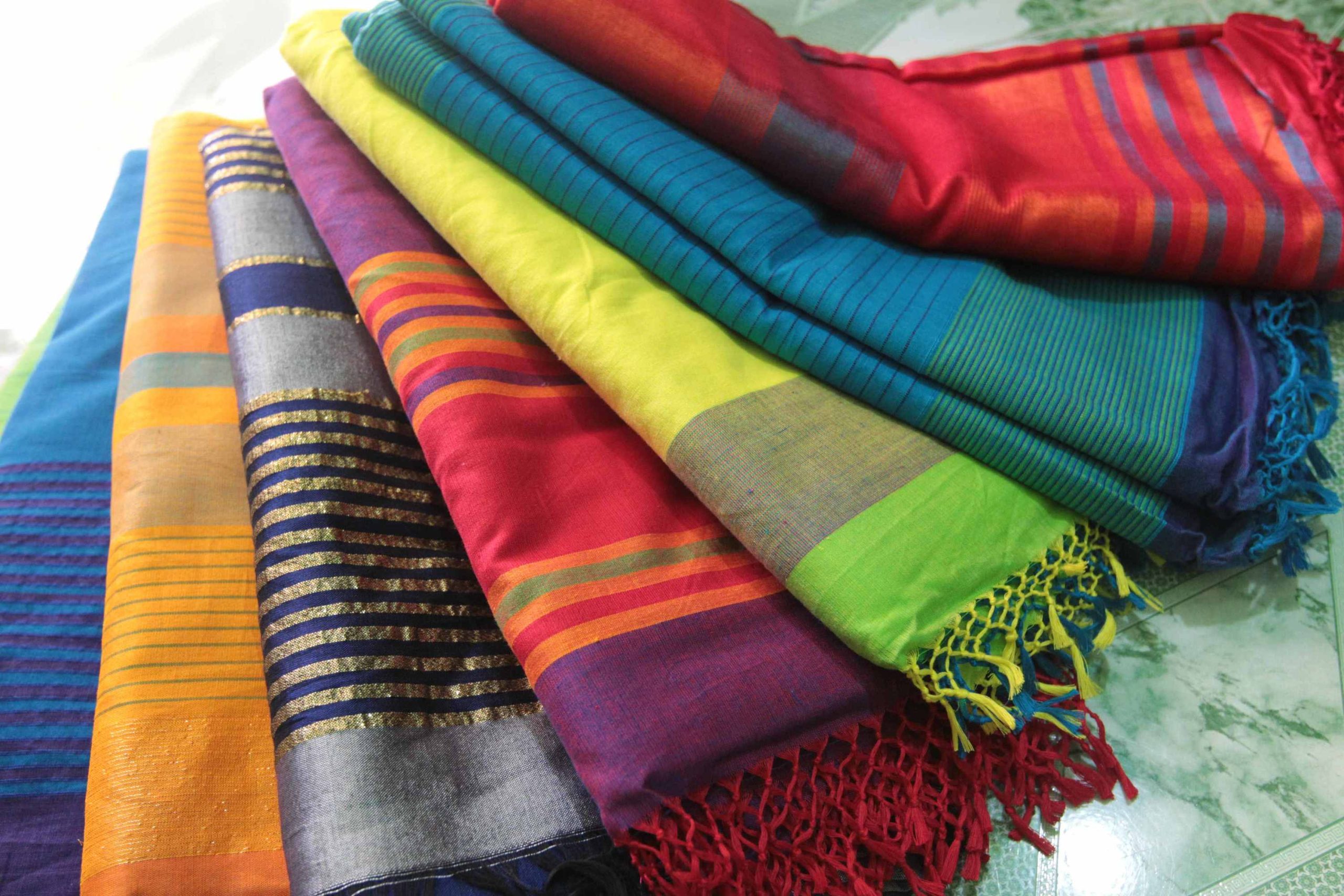
Uva Handloom
The Uva handloom tradition stands as a testament to Sri Lanka's rich textile heritage, weaving together centuries of craftsmanship with cultural significance. Nestled in the highlands of Sri Lanka, the Uva Province has long been recognized as a cradle of traditional weaving, where the rhythmic clatter of handlooms has echoed through generations.
In the villages scattered across Uva, particularly around Ella, Welimada, and Badulla, the art of handloom weaving has been carefully preserved through family lineages. These artisans have maintained their distinctive weaving techniques, passing down intricate patterns and color combinations that reflect the natural beauty of their surroundings. The misty mountains, cascading waterfalls, and verdant tea plantations of Uva have inspired unique design elements that make their textiles instantly recognizable.
The traditional handloom products of Uva are characterized by their exceptional quality and attention to detail. Local weavers take pride in creating fabrics that combine durability with aesthetic appeal. Their sarees, in particular, are known for their unique border designs and motifs that often incorporate elements from local folklore and Buddhist art. The cotton fabrics produced here are celebrated for their comfort and longevity, making them perfect for both everyday wear and special occasions.
However, like many traditional crafts, Uva's handloom sector faces significant contemporary challenges. The rise of mechanized textile production has created intense market competition, while younger generations are increasingly drawn to other professions. Yet, there's a growing recognition of the value of these traditional crafts, leading to various revival initiatives. Government programs, alongside private sector involvement, are working to modernize the industry while preserving its essential traditional elements.
Recent years have seen an encouraging trend as fashion designers and conscious consumers increasingly seek out authentic handloom products. This renewed interest has sparked innovation within the community, with weavers experimenting with contemporary designs while maintaining traditional techniques. The industry has also embraced sustainable practices, using natural dyes and materials, making these products particularly appealing to environmentally conscious consumers.
The future of Uva handloom lies in its ability to adapt while preserving its unique identity. Many weavers are now combining age-old techniques with modern design sensibilities, creating products that appeal to contemporary tastes while maintaining their traditional charm. E-commerce platforms have opened new markets, allowing these artisans to reach customers worldwide, though the personal touch of visiting local weaving centers remains a special experience for many textile enthusiasts.
Supporting Uva's handloom industry means more than just preserving a traditional craft – it's about sustaining entire communities and their way of life. Each handwoven piece tells a story of cultural heritage, artistic expression, and sustainable living. As we look to the future, the preservation and growth of this industry remain crucial for both the economic sustainability of local communities and the continuation of Sri Lanka's rich cultural heritage.
The resilience of Uva's handloom tradition, despite modern challenges, demonstrates the enduring value of handcrafted textiles in our increasingly mechanized world. It stands as a reminder that some things are worth preserving, not just for their cultural significance, but for the unique beauty and quality they bring to our lives.

